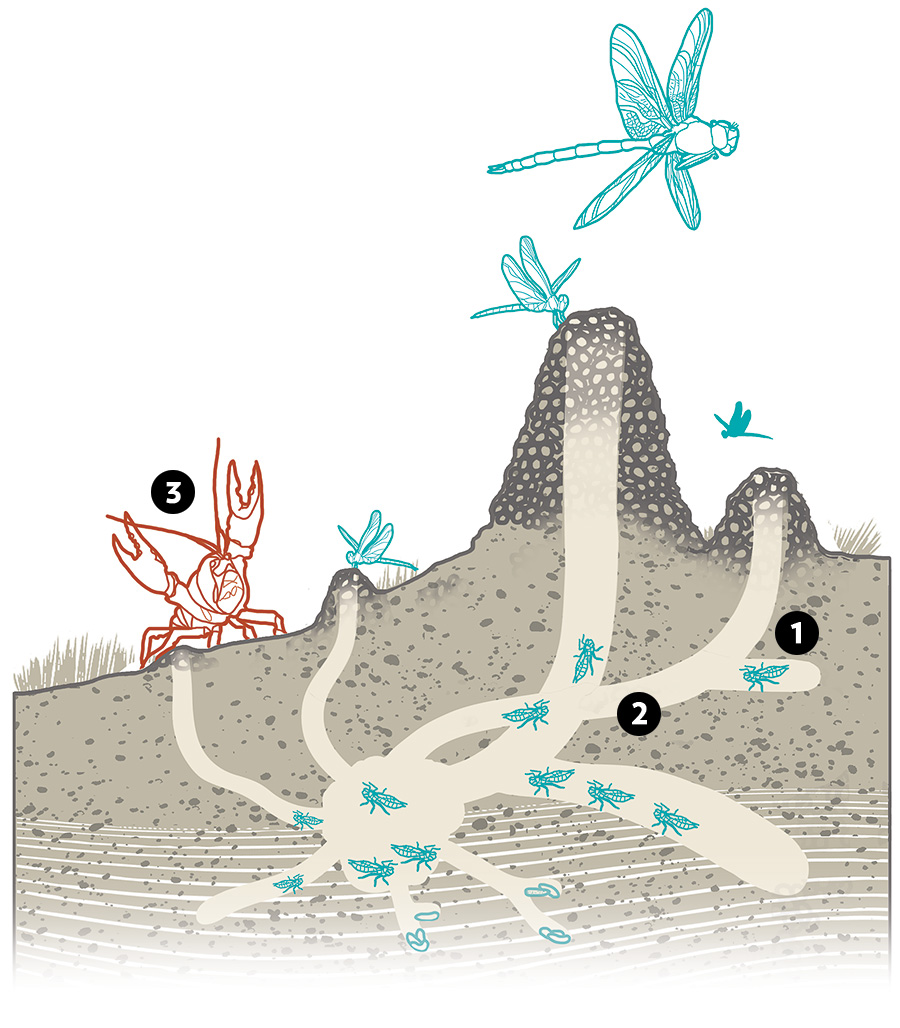
Living in a home built by a critter that might eat you may seem suicidal. But tell that to the Hine’s emerald dragonfly. The larvae of this rare bug — the only dragonfly in the United States to be listed as an endangered species — grow up in crayfish burrows in a part of the Des Plaines River Valley just southwest of the city. Scientists are studying why they thrive in this treacherous location and not elsewhere.
1 In summer, adult dragonflies feed, mate — and die. Eggs laid in a stream hatch into microscopic larvae, which search for the crayfish burrows. For up to five years, the beetle-like larvae live in these slender caverns when they aren’t patrolling for food.
2 The larvae’s host, the devil crayfish, uses its sharp claws to create and maintain complex streamside towers and tunnels that run as deep as six feet. Larvae and crayfish cohabit all winter. Inevitably, the crayfish and larvae meet, and some of the former eat the latter.
3 Biologists want to better understand how any larvae make it out alive. So scientists at the Urban Stream Research Center in DuPage County, who have been raising dragonfly larvae, recently began raising devil crayfish, too — to introduce into habitats where they can observe these unusual bedfellows. The hope is that by adding more crayfish, they can ultimately help the dragonfly rebound.


